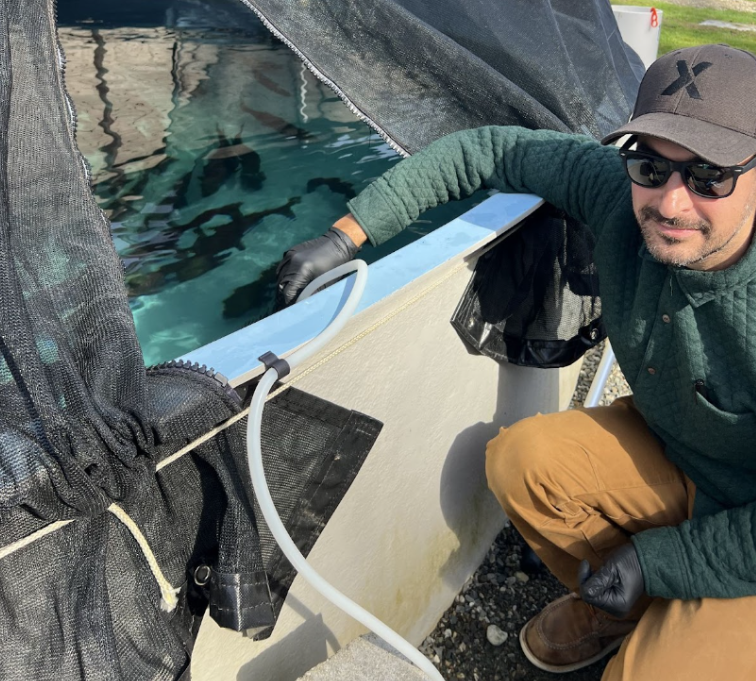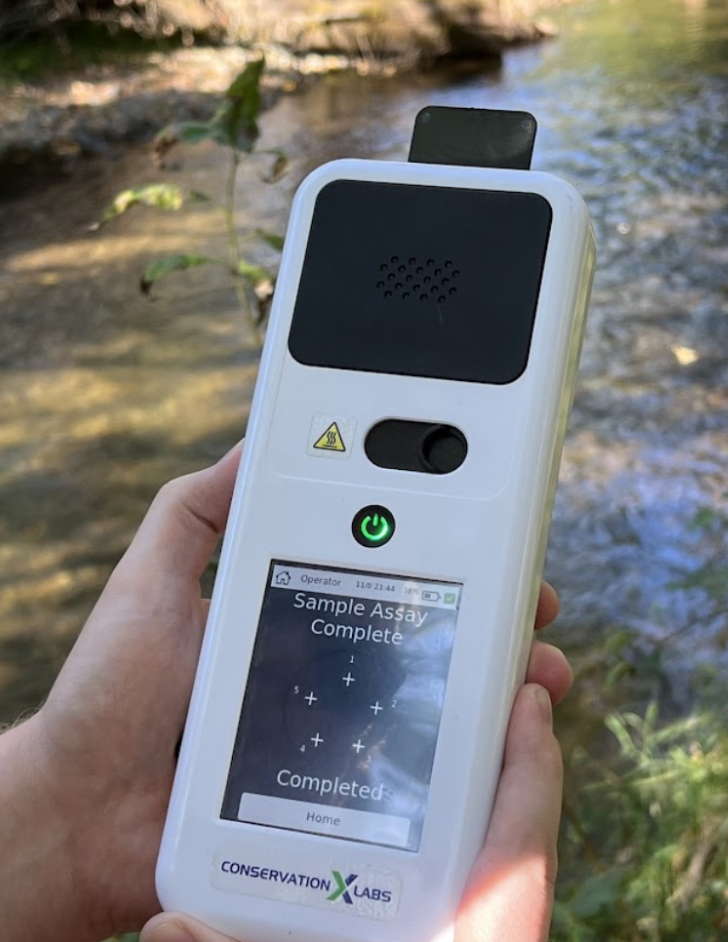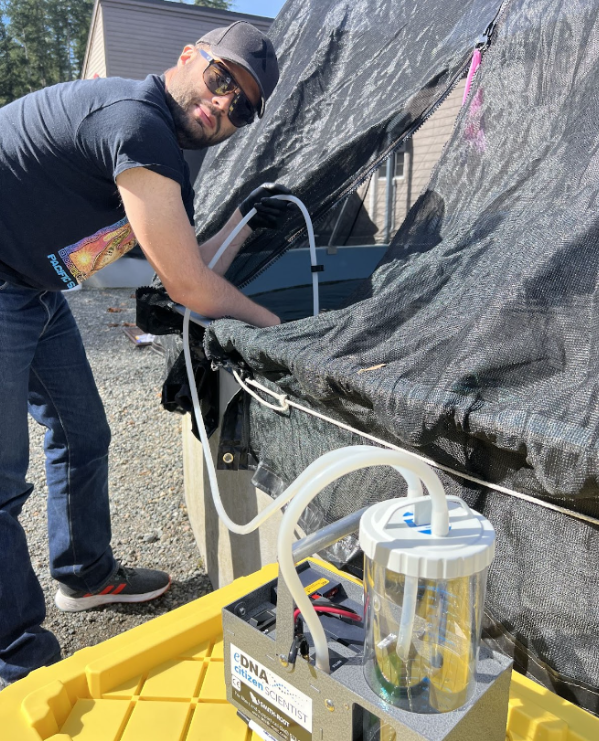David Fox, our Director of Molecular Product Business Development, and David Day, our Molecular Lab Technician, filter water from the Fremont Cut, located just down the street from our laboratory in Seattle
The Thylacine Team, based in Seattle, WA, is proud to be working on the NABIT device, a revolutionary platform designed to democratize genetic testing in the field. One of our current and most impactful projects is developing a workflow for environmental DNA (eDNA) testing specifically for salmon species in aquatic systems, starting in the Pacific Northwest of North America. With support from Oceankind, this project will expand the NABIT’s capabilities, allowing it to detect a range of important species and pathogens in aquatic ecosystems, starting with the iconic and ecologically important sockeye salmon (Oncorhynchus nerka) and Chinook salmon (Oncorhynchus tshawytscha).




This collaboration with Oceankind signifies more than just technological advancement—it represents a meaningful step toward empowering decision-makers with real-time data. eDNA testing offers an unparalleled opportunity for the noninvasive detection of potential invasive species, harmful pathogens, and pressured native species, enabling us to safeguard salmon populations that are vital to the health of entire ecosystems. We’ve known from the outset that making such cutting-edge science portable and easy-to-use in the field would be challenging, but this project proves that the hard work is paying off.
One of the most exciting aspects of this project is how it redefines conservation efforts. With eDNA, we no longer need to physically spot or catch fish to understand their presence or monitor population health. Traditional methods, such as snorkeling surveys, trapping, or electrofishing, are labor-intensive, time-consuming, and often dangerous. The NABIT device, combined with our expertise in sample extraction, is enabling us to create a simple workflow that goes directly from water sample to salmon species detection in the field in less than 45 minutes. This type of non-invasive genetic monitoring will allow conservationists and wildlife managers to make informed decisions quickly, without causing disruption to already fragile ecosystems.
The work we are doing with salmon is only the beginning. As the NABIT device continues to evolve, we envision it as a go-to tool for anyone working on the front lines of conservation—especially in regions where traditional laboratory testing is not accessible but genetic diagnostic information is critical. By providing real-time data, NABIT empowers early detection and rapid response (EDRR) efforts, preventing the spread of invasive species, monitoring ecosystem health, and protecting biodiversity in ways never before possible.
From helping track the spread of invasive species like the European green crab to monitoring aquatic diseases or pests, the NABIT’s portability and ease-of-use will provide crucial data across a range of environments. With eDNA applications rapidly expanding, we are actively looking for partners interested in developing their own eDNA-based solutions or deploying our newly-developed salmon detection kit. This project is just the beginning of how NABIT can transform species monitoring, pathogen detection, and biodiversity conservation.




